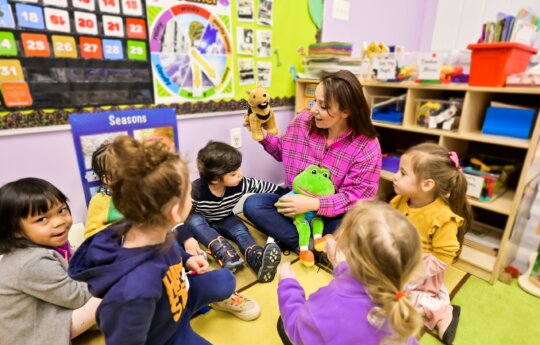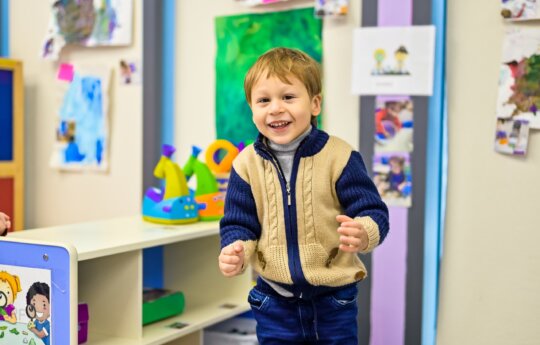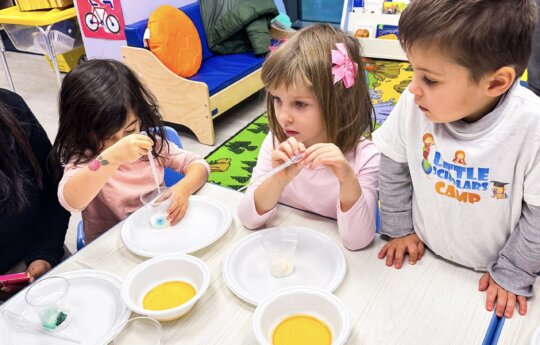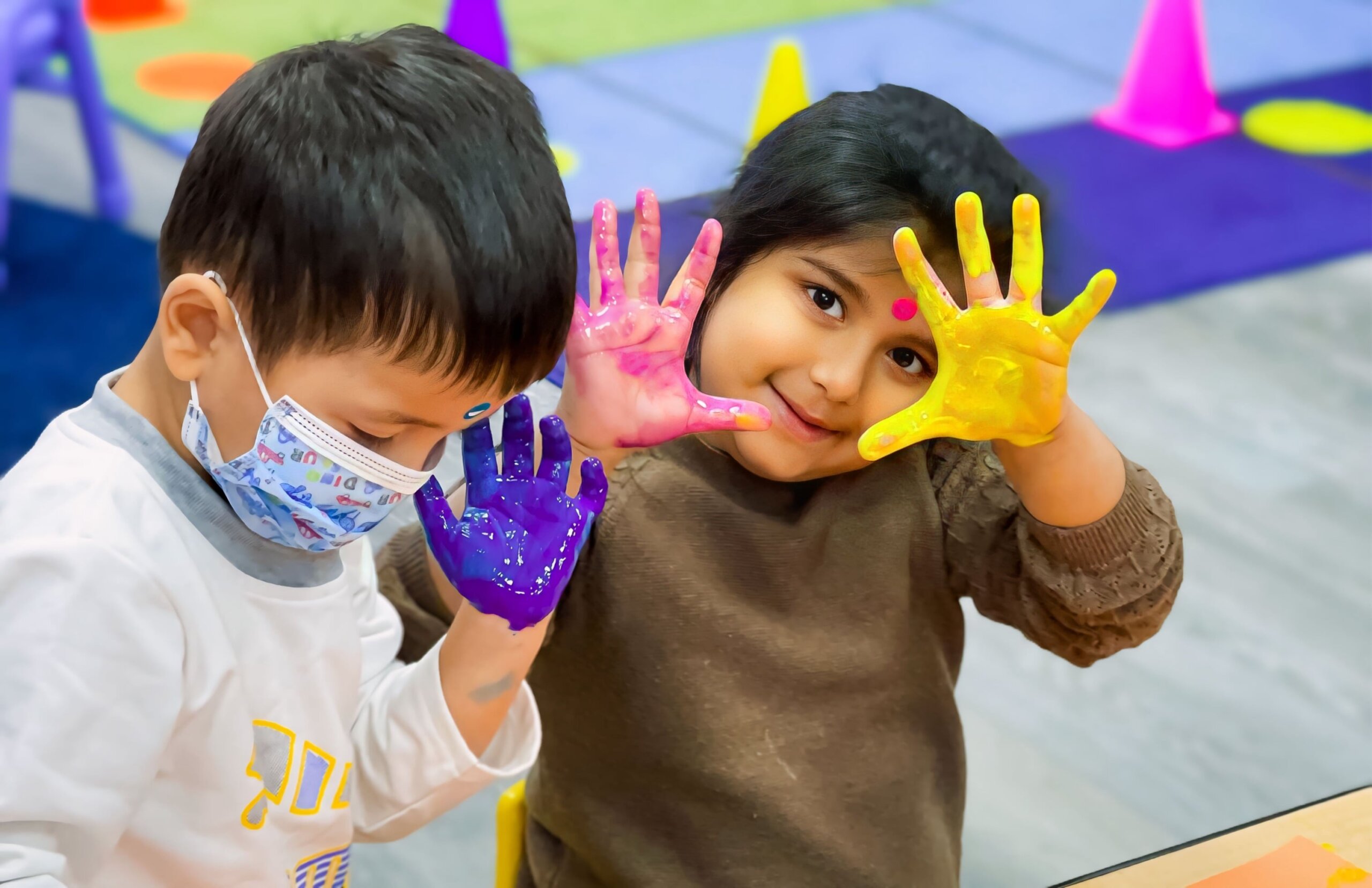
Holi, known as the Festival of Colors, is a vibrant celebration heralding the arrival of spring and the triumph of good over evil. Rooted in ancient Hindu mythology, it transcends cultural boundaries, bringing people together with music, dance, and the playful splashing of colored powders and water. This festival signifies seasonal change and emphasizes unity, forgiveness, and renewal in social and cultural contexts, making it a time of joyous communal harmony.
Discover the historical roots, cultural significance, and fun ways to celebrate this vibrant festival with your family. Let’s embrace the joy of Holi and learn how it brings people together, fostering a spirit of unity and happiness!
What Does Holi Celebrate?
Holi is a fun and colorful festival many people celebrate in India and other parts of the world. It’s like a big, bright party where everyone throws colorful powders and water at each other, laughing and enjoying the start of spring. But Holi is not just about playing with colors; it has exciting stories and meanings.
Holi has historical and cultural origins rooted in various Hindu myths and traditions. At the heart of Holi’s celebration are the legends that narrate tales of divine play and cosmic battles, illustrating the festival’s deep-rooted significance in Hindu culture. Let’s learn about them with our kids!
Holi Explained for Kids
The Stories Behind Holi
- The Story of Prahlad and Holika: One of the main stories for Holi is about a brave little boy named Prahlad and his mean aunt Holika. Prahlad was a good boy who loved the good god Vishnu, but his father and aunt did not. They tried to harm Prahlad because he wouldn’t stop praying to Vishnu. Holika, who thought she couldn’t be hurt by fire, took Prahlad into a fire with her, hoping he would get hurt. But guess what? Prahlad was safe because he was so good and honest, and Holika, who was doing something terrible, was burned by the fire. This story teaches us that being good and honest can protect us and that bad actions lead to bad results.
- Krishna and Radha: Another fun story of Holi is about Lord Krishna and Radha. Krishna loved to play pranks and once complained to his mother about why Radha was so fair and he was dark. His mother suggested he color Radha with paints to make her look like him. So, Krishna played with colors and painted Radha, and they became very close friends. This playful coloring became a tradition and is why we play with colors on Holi.
Why We Celebrate Holi
- Good Over Evil: Holi reminds us that good always wins over bad, just like Prahlad was safe and his aunt Holika couldn’t harm him.
- Welcome to Spring: Holi comes when winter ends and spring starts. It’s a time to enjoy the new flowers, fresh air, and warm sun.
- Friendship and Forgiveness: It’s a special day to play with friends, forgive people, and forget any sadness. Everyone is equal on Holi, and we want to have fun together.
- Colors and Happiness: Throwing colors around is a way to say goodbye to the old and welcome the new. The colors can represent all the different emotions and experiences in life, showing us how beautiful and diverse our world is.
So, Holi is not just about throwing colors and having fun; it’s a festival with deep meanings and beautiful stories that teach us about goodness, friendship, and the joy of life.
Holi Facts for Kids
While Holi is a major festival in India and Nepal, it’s also celebrated in many other countries, including the United States, Canada, the United Kingdom, and Australia, especially in places with large Indian communities. Each place adds its own local touch to the celebration!
Here are some fascinating and educational facts about Holi that show how this colorful festival is celebrated and enjoyed around the world:
- Natural Colors: Long ago, the colors used in Holi, called ‘Gulal,’ were made from flowers and herbs. This tradition was healthy and environmentally friendly. Nowadays, some people still use natural colors made from plants and flowers to keep the festival safe and eco-friendly.
- A Day for Sweets: Holi is known for delicious foods and sweets. One popular treat is ‘Gujiya,’ a sweet dumpling filled with dried fruits and condensed milk. Eating and sharing these foods is a big part of the celebration.
- Lathmar Holi: In a village called Barsana in India, there’s a unique way of celebrating Holi called “Lathmar Holi,” where women playfully hit men with sticks, and men protect themselves with shields. It’s all in good fun and part of the tradition.
- Holika Dahan: The night before Holi, people gather for ‘Holika Dahan,’ where they light bonfires to symbolize the burning of evil, as in the story of Holika and Prahlad. This ritual is a reminder of the victory of good over evil.
- Water Fights: In many places, Holi involves throwing colors and water at each other. People use balloons and buckets, turning the celebration into a lively and fun water fight.
- Cultural Influence: Holi has influenced many aspects of culture, including art, music, and cinema. It is often depicted in paintings and films, showcasing the vibrant and joyful spirit of the festival.
Colors and Their Meanings
- Red: Represents love. It is a very important color during Holi, symbolizing the love that people share with each other.
- Blue: Represents the Hindu god Krishna. Since Krishna is often depicted with blue skin, this color is used to remember his playful nature and spiritual significance.
- Yellow: Symbolizes happiness, peace, and meditation. It is linked to the color of turmeric, a spice used in rituals and healing practices.
- Green: Stands for new beginnings and the harvest. Green is a sign of the new life that comes with spring and the fresh start that Holi brings.
- Pink: Often associated with caring and compassion. Pink colors during Holi show friendship and kindness.

Celebrating Holi with Kids
Holi is a delightful festival for children, filled with colors, laughter, and joy. Introducing kids to Holi can be a fun and memorable experience. Here are some safe and enjoyable ways to celebrate Holi with children, focusing on the use of natural and non-toxic colors.
1. Choose Natural Colors
- Make Your Own: Create Holi colors at home using ingredients like turmeric powder (for yellow), beetroot (for red), and spinach (for green). This way, you know exactly what’s in them and can ensure they’re safe for children’s skin.
- Buy Organic: If you’re purchasing colors, look for organic Holi powders certified non-toxic and safe for children. These are made from natural materials and are less likely to cause skin irritation or harm if accidentally ingested.
2. Dress Appropriately
- Have children wear old clothes that cover most of their skin to protect it from colors. Long-sleeved shirts and long pants are ideal.
- Apply a thin layer of oil (like coconut or olive oil) on their skin and hair before playing with colors. This acts as a barrier and makes it easier to wash off the colors later.
3. Play in a Safe Environment
- Choose a safe, open space for playing with colors, away from traffic and hazards.
- Keep a close eye on the children, ensuring they play gently and don’t throw colors directly at each other’s faces.
4. Teach Respect and Consent
- Educate children about the importance of consent before playing Holi. They should ask before applying colors to others and should respect anyone’s wish not to play or be smeared with colors.
- Teach them the cultural significance of Holi and why it’s celebrated, fostering respect for the traditions and practices of others.
5. Use Gentle Play Methods
- Instead of throwing powders, encourage children to gently apply color to each other’s cheeks with their hands. This reduces the risk of eye irritation and inhalation.
- Use water balloons with caution, ensuring the water is clean and the play is gentle to avoid injuries.
6. Aftercare
- After playing, ensure children bathe with mild soap and shampoo to remove the colors. The sooner they wash, the easier to get the colors off.
- Use a moisturizer after bathing to soothe the skin and help with any dryness caused by the colors.
Holi Activities for Kids
- Color Throwing: This is the heart of Holi! Use safe, natural, or organic colors and let kids gently toss them at each other. It’s a playful way to teach kids about different colors and the joy of sharing happy moments.
- Water Balloon Fights: Fill small balloons with colored water to add a twist to the traditional Holi fun. Ensure the balloons are small and easy to burst to prevent injuries. This can be a thrilling activity for kids, combining the excitement of water play with the festive spirit of Holi.
- Musical Events: Organize a Holi-themed music session where kids can dance and sing to traditional and contemporary Holi songs. This not only entertains but also immerses them in the cultural aspects of the festival.
- Crafting with Colors: Set up a crafting area where children can use Holi colors to create art. They can make colorful handprints, drawings, or even Holi cards to share with friends and family.
- Holi Story Time: Arrange a storytelling session about Holi, explaining its history and significance through engaging tales and myths. This can be educational and fun, helping children understand the cultural background of the festival.
- Eco-Friendly Color Making: Teach kids how to make natural Holi colors from flowers, fruits, and vegetables. This activity is safe and eco-friendly and a great learning experience about using natural resources creatively.
- Traditional Dance and Dress Up: Encourage kids to dress in traditional attire and teach them folk dances related to Holi. This helps them connect with the cultural roots of the festival and appreciate its traditional elements.
- Holi Food Party: Introduce children to Holi delicacies like gujiya, puran poli, and thandai. You can even involve them in simple cooking activities, making easy and safe dishes, enhancing their cultural experience.
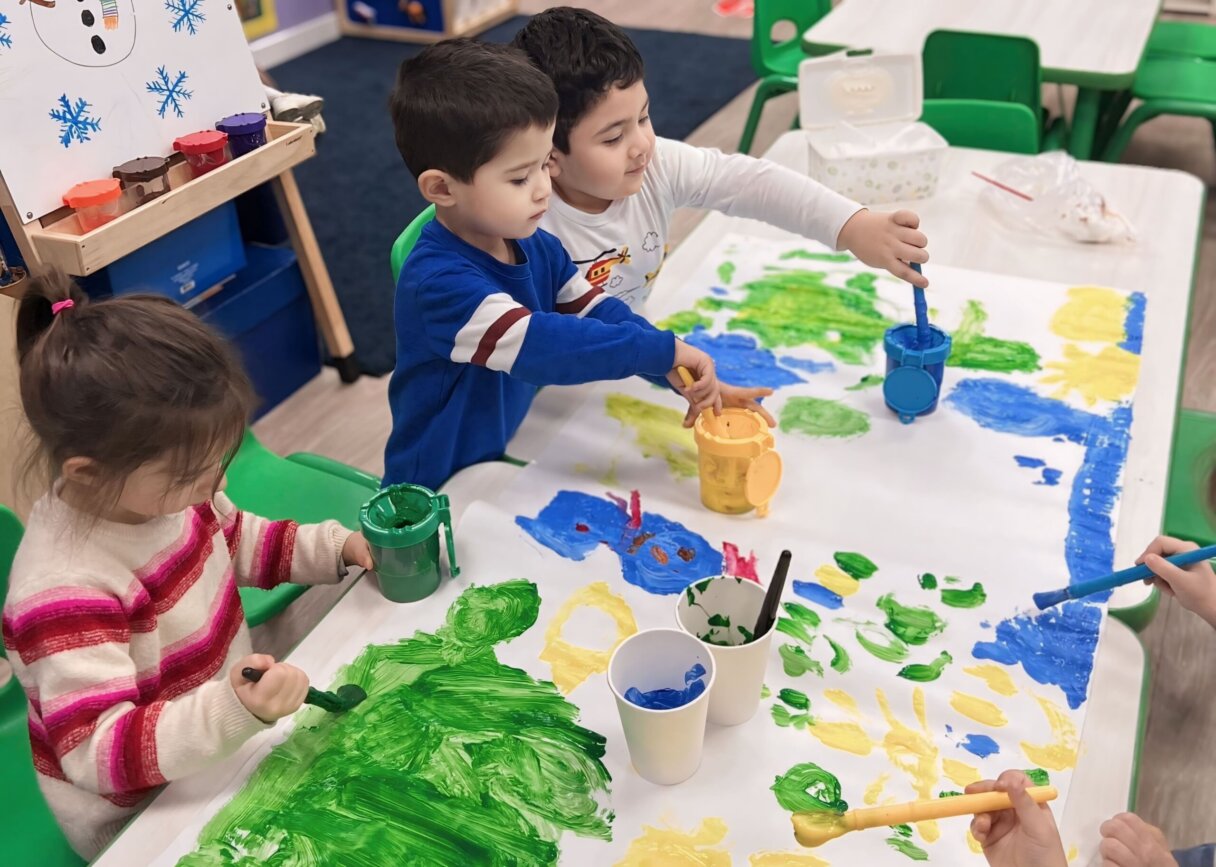
Holi Crafts for Kids
Engaging in Holi-themed crafts is a wonderful way for children to get into the spirit of this vibrant festival. Here are some craft ideas and instructions for making Holi-related items, including DIY colors and decorations.
1. DIY Holi Colors
Materials Needed:
- Cornstarch or rice flour
- Food coloring (various colors)
- Water
- Bowls
Steps:
- Make the Base: Pour a cup of cornstarch or rice flour into a bowl.
- Add Color: Add a few drops of food coloring to the flour. Choose bright and vibrant colors like pink, yellow, green, and blue.
- Mix: Add a little water and mix everything together until the flour is evenly colored. The mixture should be powdery, not too wet.
- Dry: Spread the colored powder on a baking sheet and let it dry completely, either in the sun or a warm room.
- Break it Up: Once dry, break any lumps to get fine, smooth, colored powder.
- Play Time: Store the powder in containers and use it for safe and natural color throwing during Holi.
2. Holi Festival Decorations
Paper Marigold Flowers:
Materials Needed:
- Orange and yellow tissue paper
- Green pipe cleaners
- Scissors
Steps:
- Cut the Paper: Cut the tissue paper into squares (about 6 inches each).
- Layer and Fold: Stack four squares, alternating colors, then fold them accordion-style (back and forth like a fan).
- Secure the Center: Twist a green pipe cleaner around the center of the folded tissue to make the stem.
- Create Petals: Gently separate and fluff each layer of tissue paper, pulling towards the center to form a flower shape.
- Display: Make several flowers and string them together to create a festive garland or use them as table decorations.
3. Holi-Themed Art
Materials Needed:
- White poster board or canvas
- Colored chalks or Holi powders
- Spray bottle with water
Steps:
- Prepare the Canvas: Place the poster board or canvas flat on a protected surface.
- Sketch: Draw a Holi-themed scene or patterns with a pencil.
- Coloring: Using colored chalks or fingers dipped in Holi powders, fill in the sketch.
- Spray: Mist lightly with water to set the colors.
- Dry and Display: Allow the artwork to dry completely before displaying it.
Conclusion
Holi is more than just a festival of colors; it is a celebration of life, community, and the triumph of good over evil. Holi brings people together through its vibrant hues, heartwarming stories, and joyous activities, fostering unity and happiness. It invites children and adults alike to partake in the festivities, spreading laughter and cheer. As we embrace the playful splashing of colors, we also immerse ourselves in the rich tapestry of cultural traditions, gaining a deeper appreciation for the diversity that shapes our world.
Celebrating Holi with our families and communities adds color to our lives and teaches valuable lessons of love, friendship, and renewal. So, let’s join in this beautiful festival, creating memories and learning more about the cultural diversity that enriches our global village. Holi is a perfect opportunity to celebrate togetherness, spread joy, and revel in the kaleidoscope of life’s colors.
Ready to give your child a vibrant start?
Join the Little Scholars Daycare family today! Experience a nurturing environment where young minds blossom through fun learning and creative play. Don’t miss out on the journey of discovery and growth. Call us or visit our website to enroll your little scholar and be part of a community that cherishes early education. Let’s shape the future together, one little scholar at a time!

